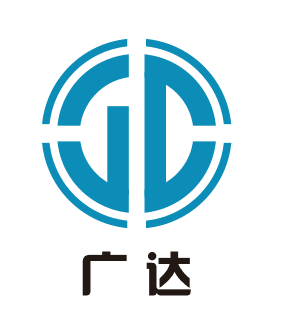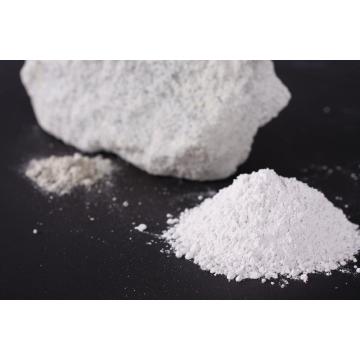Organic bentonite can be widely used in many industries as additives, thickeners, decolorizers, gelling agents, and the like.
Bentonite can be treated with organic materials to obtain so-called organoclays, ie organic bentonites. For example, it can be modified with organic compounds such as quaternary ammonium salts (such as dimethyl octadecyl ammonium chloride) to form a part of ammonium cation chemical bonds, as shown in Figure 1:
Its hydrogen bonds are linked by the auxiliary atoms to the surface of the individual flakes of clay.
The quaternary ammonium ions are replaced by sodium ions on their surface, and their organic groups bind strongly to the clay:
After the above reaction, the clay changes from hydrophilic to organic. It is completely miscible with other organic solvents and forms viscous colloids that are stable under high temperature and mechanical shearing action R1 R2-N-R4 Cl- R3R4N+Cl-+Na+clay-→(R)4N+clay-+NaCl. This colloid has good resistance to dilute alkali and dilute acid.
Although the Modified Bentonite has changed from hydrophilic to organic, it still retains the structural characteristics and many properties of bentonite. The main component of bentonite is montmorillonite, and the montmorillonite crystal is basically a three-layer structure with a two-dimensional aluminum/manganese oxygen octahedron sandwiched between two two-dimensionally arranged silicon tetrahedrons. Montmorillonite crystals have a large number of negative charges, are polyanions, and the crystals are platelets. Its surface is generally 1 to 2.0 nm in width and less than 1 nm in thickness. The two-degree morphology of the crystal produces a very high surface area, approximately 800 m2/g. In fact, only about 5 g of montmorillonite can cover the entire football field with its effective surface area. The net negative charge in this crystal is naturally an anion that acts as a neutralizer and is usually balanced with calcium and sodium ions.
Organic bentonite is created by the exchange of some other cations, such as quaternary ammonium cations, with the inorganic cations of montmorillonite. Quaternary ammonium cations have a lipophilic portion that allows hydrophilic montmorillonite to be available
I. Structure and properties of organic bentonite
Organic bentonite is an organic clay obtained by modification with bentonite. It is a natural silicate mineral. Its main component is montmorillonite, its chemical composition is green crystal kaolinite and its chemical formula is H2Al2Si4O12·nH2O. Bentonite can be generally divided into two categories: one that can be highly inflated and absorbs water, and can be freely glued in water. The other type does not swell after wetting, but it has high activity. Expansive bentonite has a strong absorption, can absorb 5 times its weight or 15 times its volume of water, and its volume increases after water absorption to form a smooth and sticky gel. Bentonite is a montmorillonite layered structure of silicate clay, with charge, between the layers is water and cations, they can alternate with each other, the distance between the layers can be contracted by the amount of water And expanding, this is the reason for its expansion. The molecular structure of bentonite has a very high surface area, which makes it have a strong adsorption capacity. In addition, bentonite also has a strong suspension, dispersibility, thickening, lubricity, solvent and oil to wet (as shown in Figure 2 (a)).
The surface of montmorillonite is covered by thousands of quaternary ammonium molecules. At the edge of the crystal, hydroxyl groups form hydrogen bonds through it. Organic bentonite crystals can be linked to each other, which is the source of colloidal organic bentonite. The junction of the crystal is shown in Fig. 2(b), which forms a colloidal structure, as shown in Fig. 2(c).
These structural and chemical properties of the crystal ultimately lead to different roles for the organic bentonite in the ink.
Second, the role of organic bentonite in ink
Organic bentonites are generally used as thickeners in inks. Thickeners are used in relatively dilute systems, the purpose of which is to increase the viscosity of the system and suspend the solid particles of the system to reduce their settling. Because of its structural and qualitative characteristics, organic bentonite makes it play a role in improving the printability of ink in ink. This effect is reflected in the following aspects: The first is the control of printing outlets. The addition of organic bentonite to the ink reduces the distortion and enlargement of the printing dots due to organic
Bentonite causes a strong colloidal structure in the ink. Followed by the suppression of flying ink. The addition of organic bentonite to the ink can well suppress the occurrence of flying ink in printing. Again, organic bentonite has the effect of keeping the viscosity of the ink stable.
The effect of organic bentonite on the rheological properties of the ink can be reflected in the following experimental curves of the rheological properties of the ink.
III. Experimental study on the effect of organic bentonite on the rheological properties of high-speed offset printing ink
In order to examine the effect of organic bentonite on ink performance, it is first necessary to add different proportions of organic bentonite to the ink and fully grind evenly. For this purpose, the press rotation black ink produced by the Taiyuan Ink Factory was arbitrarily selected, and the news circulation black ink was assigned to the Legal Daily, and the 4536 offset printing ink of the Beijing Xinhua Equipment Factory was transferred to black ink. Then, in these raw inks, different proportions of organic bentonite were added for grinding to prepare test inks containing 0.5%, 1%, 2%, and 2.5% of organic bentonite in four proportions. Then they were measured for their viscosity, viscosity, viscosity increase, and ink flow. They were examined by comparing their performance with those of the original ink. The ink samples were used to test the IGT printability instrument with a wire roller to examine the organic bentonite. The effect of printing outlets.
1. The effect of organic bentonite on the viscosity of ink
Graph 3 (a, b, c, d, e) is the use of PX-III automatic parallel plate viscometer at 22 °C
The τ-D plots and D-lgt plots of each ink sample were tested under data and processed by data processing.
This colloidal structure hinders the flow of the ink pigment particles, thereby increasing the viscosity of the ink.
2. The effect of organic bentonite on ink fly-ink volume and viscosity increase
The comparison histograms of the ink amount and the viscosity increment of different ink samples measured with the YQM-1 ink stickograph are shown in FIGS. 12 and 13 .
From the figure, it can be seen intuitively that the addition of organic bentonite can well suppress the occurrence of ink flying in printing, and the effect with organic bentonite
The addition of organic bentonite will increase the viscosity of the offset ink, which means that organic bentonite will stabilize the viscosity of the ink.
The reason why organic bentonite can suppress the occurrence of flying ink is also caused by its unique structural characteristics. As described above, organic bentonite forms a colloidal structure in the ink, so that the viscosity of the ink increases. During the printing, due to the shearing action between the ink rollers, the colloidal structure formed by the organic bentonite is damaged at the contact point of the ink roller, the ink is in the state of the original structure, and the viscosity is low, thus ensuring the good transfer of the ink; After leaving the contact point between the two rollers, the shear force is reduced, the colloid structure recovers quickly, the viscosity of the ink is quickly increased, and the filament head is shorter than the original ink, and the ink is not easily thrown from the printing press. Inhibited the occurrence of flying ink phenomenon.
From Figure 3 to Figure 10, it can be seen that the viscosity of various inks becomes larger and larger with the increase of the amount of organic bentonite; the length of the ink head becomes shorter as the amount of organic bentonite increases, and the curve D-lgt The intercept, which decreases with the increase in the amount of organic bentonite added, indicates that the addition of organic bentonite makes the ink thicker.
The viscosity of the ink becomes larger with the addition of organic bentonite, which is caused by the structural characteristics of organic bentonite. After it is added to the ink, the crystals can form hydrogen bonds with each other through the hydroxyl groups at both ends of the crystal block to form a joint. Figure 11 shows
Workshop
Size, it can be seen that after adding bentonite, the thixotropy of the ink becomes larger.
The reason why organic bentonite makes the thixotropy of the ink larger is also determined by the aforementioned unique structural features. Under the action of low shear force, the colloidal structure formed by organic bentonite makes the viscosity of ink become larger; under the action of high shear force, this colloidal structure is destroyed and the viscosity of ink is reduced; once the shear force disappears, The colloidal structure can be restored, so that the viscosity of the ink is increased again, so that the thixotropy of the ink becomes larger.
This makes the thixotropy of the ink larger, which is the fundamental reason why the organic bentonite can reduce the amount of flying ink and reduce the spread of printing dots.
Fourth, the conclusion
Through the above experimental research and analysis, the following conclusions are drawn:
1. The addition of organic bentonite significantly increases the viscosity of the ink. For relatively dilute inks, the organic bentonite can be added in a suitable amount as a thickener to adjust the viscosity of the ink.
2. Organic bentonite can play a role in reducing the viscosity of the ink and stabilizing the viscosity.
3. Organic bentonite can also play a role in controlling printing dots and reducing dot gain.
4. Organic bentonite also has a good effect of inhibiting flying ink.
For high-speed rotary printing, the addition of organic bentonite to the ink can significantly reduce the flying ink in the printing process, thereby reducing the environmental pollution in the printing shop and helping to protect the health of the printing workers.
Source: Printing Network





